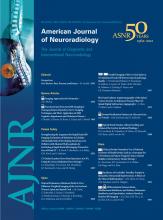Abstract
SUMMARY: During the past decade, the application of advanced MR imaging techniques in neuropsychiatric disorders has seen a rapid increase. Disease-specific alterations in brain function can be assessed by fMRI. Structural GM and WM properties are increasingly investigated by DTI and voxel-based approaches like VBM. These methods provide neurobiologic correlates for brain architecture and function, evaluation tools for therapeutic approaches, and potential early markers for diagnosis. The aim of this review was to provide insight into the principles of functional and structural imaging and to delineate major findings in MCI, AD (Part 1), autism, and schizophrenia (Part 2), which are common psychiatric disorders covering different stages of the life span. Part 2 will conclude by summarizing current applications, limitations, and future prospects in the field of MR imaging−based neuroimaging.
ABBREVIATIONS
- ACC
- anterior cingulate cortex
- AD
- Alzheimer disease
- ASD
- autism spectrum disorders
- BOLD
- blood oxygen level–dependent
- DMN
- default mode network
- EEG
- electroencephalography
- FA
- fractional anisotropy
- GM
- gray matter
- ICA
- independent component analysis
- MCI
- mild cognitive impairment
- MD
- mean diffusivity
- PCC
- posterior cingulate cortex
- rsfMRI
- resting-state fMRI
- VBM
- voxel-based morphometry
- © 2012 by American Journal of Neuroradiology
Indicates open access to non-subscribers at www.ajnr.org












